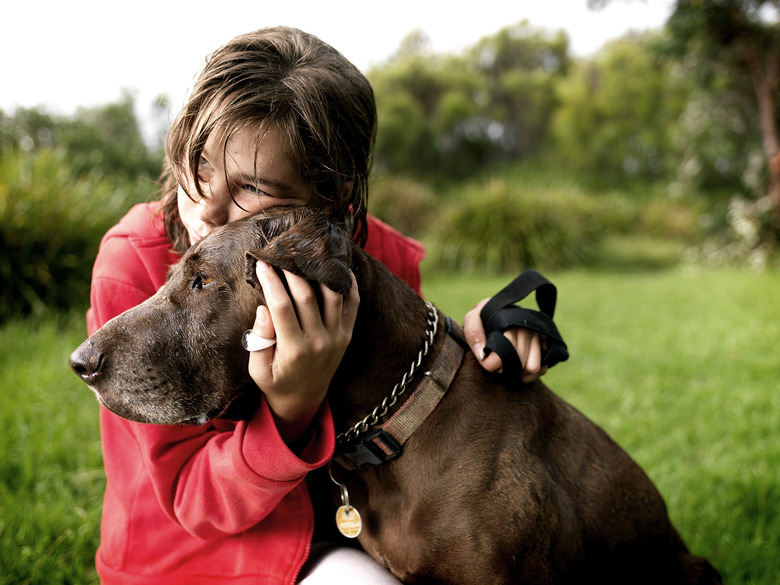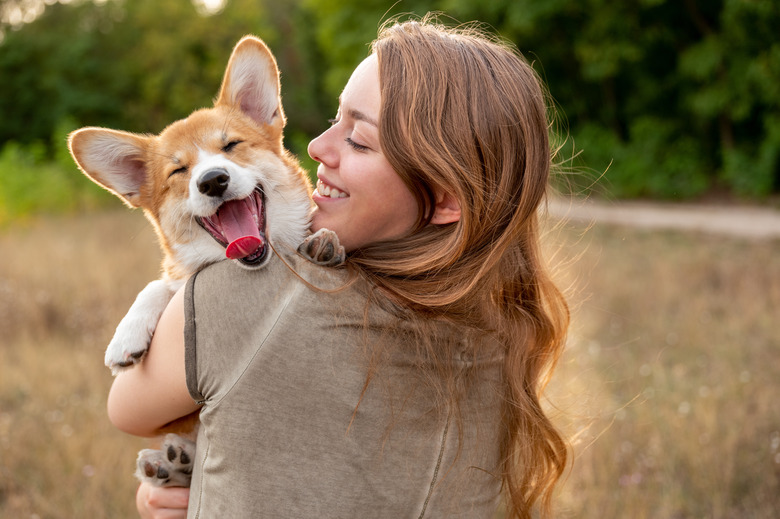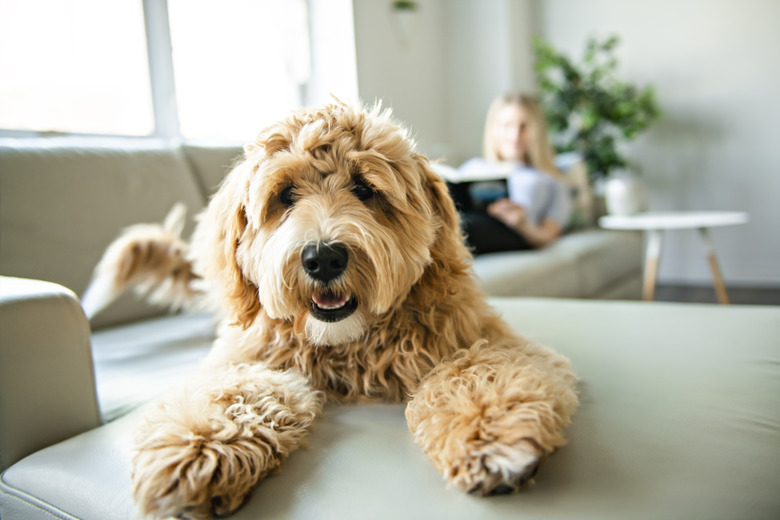How To Dye A Dog's Fur Safely
People dye their hair all sorts of colors — many not found in natural human hair — and this trend is going to the dogs. Dyeing dogs' fur safely should mean going to a groomer experienced in canine color changes because this will yield the best results. However, if you want to try it yourself, there are a few considerations including what dye to use and how. Also, you can always ask a veterinarian if she has any recommendations for coloring your dog's fur.
Canine hair coloring
Canine hair coloring
Never use human hair dye on your pet. These dyes can be toxic if ingested — not something people are prone to do, but licking their fur is natural behavior for canines. Human hair dyes contain various chemicals that can make your dog sick. Don't risk it, even if you only intend to color a small portion of your dog's fur.
If you want color that lasts for several weeks, use a hair dye specifically designed for canine use. You can purchase dog-safe dyes online or at pet stores, or ask your groomer for recommendations. Some canine hair dyes are available in gel form, making them easier to use. Creating patterns and using stencils is easier with gels than with liquid versions. Always read the instructions carefully before applying dye to your dog's fur. Note that canine hair dyes are not appropriate for puppies.
Dyeing dogs fur with food color
Dyeing dogs fur with food color
If you want to change your dog's hair color short term — such as dyeing him green for St. Patrick's Day — food coloring is the safest way to go. You can use the unsweetened version of Kool-Aid, but it will make your dog's fur sticky. Food coloring is preferable.
Bathe your dog prior to dyeing, so his fur is clean. Mix water and food coloring, then either place the mixture in a bath if your dog is small. Or put the dye in a squirt or spray bottle if your dog is large, or you only want to color certain areas. Soak the fur thoroughly, then brush or comb the dye to work it into your dog's hair. When you're finished, place your dog on newspapers or old towels until she dries naturally. Otherwise, you'll have food coloring all over the bathroom.
Dyeing dogs fur safely
Dyeing dogs fur safely
Don't allow your dog to lick areas of dyed hair while the dye is still wet. You might have to put an Elizabethan collar on your pet until the dye dries. Don't let the dye come into contact with your dog's nose, eyes, or mouth. If your dog does get dye in his eyes or other orifices, flush the area thoroughly with clean water. If his eyes or mouth appear irritated after substantial flushing, take him to the veterinarian.
Even mild dyes can cause reactions in susceptible animals. If your dog experiences an allergic reaction or starts itching, stop the coloring immediately and take him to the vet. If your dog has experienced skin reactions or his skin is sensitive, don't dye his hair.
Dog coloring controversy
Dog coloring controversy
Dyeing dogs fur is not without controversy. First, there's no surefire way to determine your dog won't react to coloring products even if they are designed for pets. Cases of burns and allergic reactions have been reported. Second, some argue bathing and grooming is stressful enough for a dog and making him stand still for extra periods of time is unreasonable.
Others suggest the practice turns the pets into accessories rather than companions and alters their natural state. If you don't want to risk potential distain from others, perhaps dressing up your dog with bow ties or colorful handmade collars is preferable.


